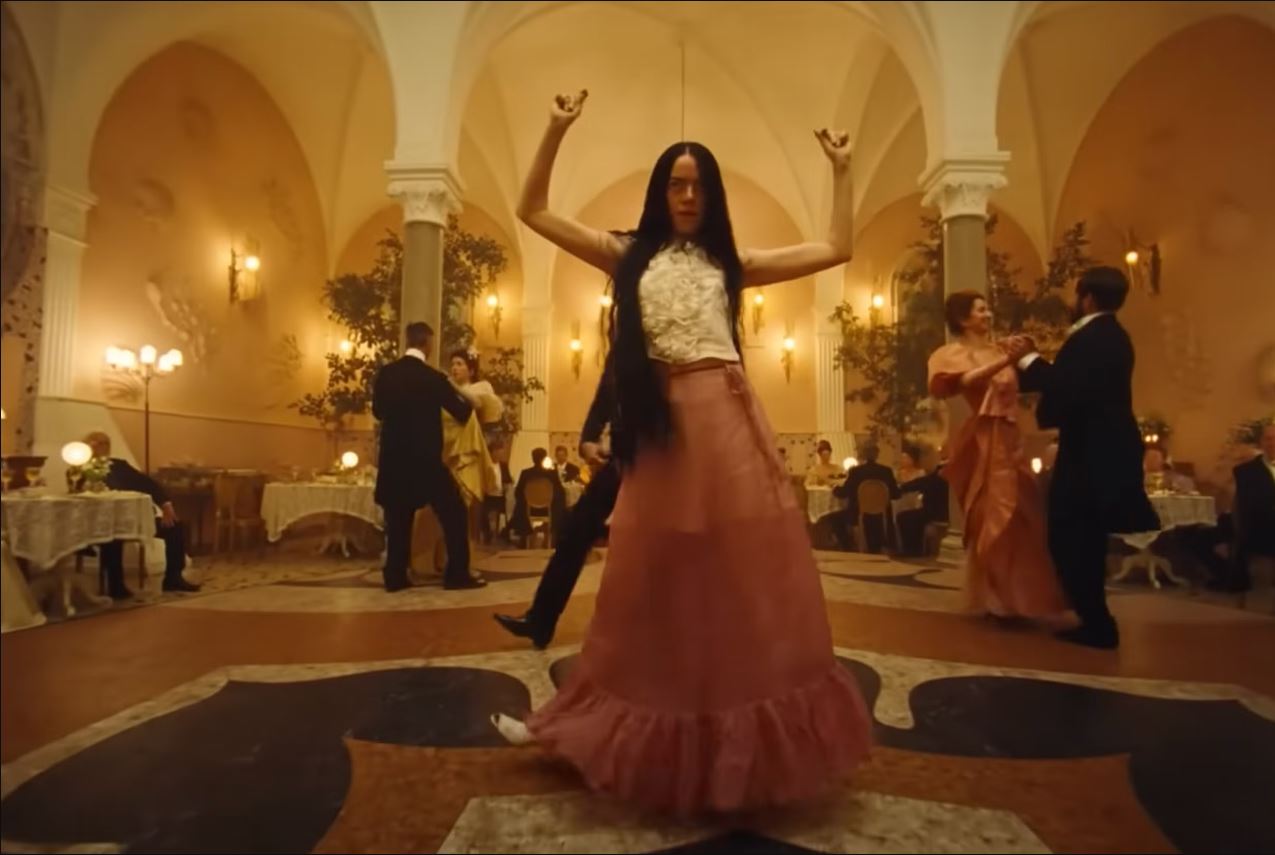Poor Things – Film Review
Reviewed by Damien Straker on the 9th of January 2024
20th Century Studios AU presents a film by Yorgos Lanthimos
Screenplay by Tony McNamara Based on Poor Things by Alasdair Gray
Produced by Ed Guiney, Andrew Lowe, Yorgos Lanthimos, and Emma Stone
Starring Emma Stone, Mark Ruffalo, Willem Dafoe, Ramy Youssef, Christopher Abbott, Kathryn Hunter, and Jerrod Carmichael
Cinematography Robbie Ryan
Edited by Yorgos Mavropsaridis
Music by Jerskin Fendrix
Rating: MA15+
Running Time: 142 minutes
Release Date: the 26th of December 2023
The success of Poor Things, another unique and compelling period drama by Greek director Yorgos Lanthimos, is attributable to several factors. First, the film’s leading actress Emma Stone offers one of the best performances of her career. Her brave physical transformation confirms her as one of the major performers of her generation. Poor Things also marks a successful reunion between Stone and Lanthimos after the excellent costume drama The Favourite (2018).
The actress and director have reunited with Australian screenwriter Tony McNamara to create a unique and sometimes disturbing comedy of manners. It is assembled with visual and personal finesse and underlines the cognitive dislocation people experience when discovering sexual liberation. Just as Lanthimos subverted our expectations of the period film with The Favourite, he surprises us by dissolving constructs of high society and our understanding of non-linear cognitive development.
While comparisons to Mary Shelley’s science-fiction novel Frankenstein are inevitable, Poor Things adapts a 1992 novel by Alasdair Gray. It opens in Victorian London with a woman named Victoria (Stone) throwing herself off a bridge. Her body is recovered by Dr Godwin Baxter (Willem Dafoe) who learns Victoria was pregnant before her death. The baby’s brain is removed and then placed into Victoria’s body. Victoria is soon reborn as Bella Baxter, a grown adult with the brain capacity of an infant. She can barely speak and walks in contorted fashion. Throughout the early stages, Doctor Baxter and his assistant, Max (Ramy Youssef), watch Bella’s speech and movement improve.
They are also disturbed by Bella’s tantrums and her discovery of her own sexuality in awkward moments at the dinner table. Dr Baxter also tries keeping her in their house as long as possible. He says his own reconstructed face is too scary for people to see. Meanwhile, Max’s attraction to Bella sees him propose to her. However, she herself is drawn to a shonky lawyer named Duncan (Mark Ruffalo). They plot to leave the manner house together, explore the world, and engage in what they call ‘furious jumping’ (sex). However, as they travel to Lisbon, Alexandria, Marseille, and Paris together, Duncan remains cruel. He never has her best interests at heart, especially when they find themselves stranded.
Lanthimos’ stylistic choices visualise how cognitive development is non-linear and inexplicable. He and cinematographer Robbie Ryan photograph the film’s opening quarter with gorgeous black and white imagery. Once Bella travels, the scenes are colourised and employ high contrast lighting and an assortment of pastel textures to enrich the screen. The luminous backdrops captured when Bella is at sea are particularly attractive. The switch to colour compares to The Wizard of Oz (1939) given how Bella and Dorothy enter foreign territory and the scenes convert from black and white to colour.
There are several interpretations for the shift in form. One suggestion is the change in colour reflects the development of Bella’s eyes as she physically matures. It could also be reflective of her naivety. The bright colour tones juxtapose with a bleak adult world where sex and liberty are monetised through capitalism. Optimism and naivety were also critical in Tony McNamara’s television series The Great. Catherine the Great humorously tried reforming violent Russia into a progressive society. The stylistic change could be deliberately unresolved to show how people’s cognitive changes are unexplainable.
This same concept is also expressed through a key scene where Bella dances alone in the middle of a ballroom. Once Duncan joins her, their bodies become entangled in increasingly funny ways before entering a fistfight with the room’s high society. The dance captures the film’s essence. It reflects how people’s impulses (movement, violence, and sexuality) are weird, singular, and irrational. The dance is compares to the colour grading by showing how changes in form occur without reason or context.
Deeper symbolism aside, the film’s shadowy, gothic decor is stunningly rendered and filled with intricate world details. Around Godwin’s laboratory, little animals roam freely with mismatched bodies and heads. Similarly, during an exterior scene a carriage moves with a with a horse’s head bobbing up and down upfront only to be steam powered from behind. Lanthimos’ direction and the production design imaginatively underline the theme of irrationality and evoke the world’s mysteries.
The awards recognition Emma Stone is receiving for her colossal performance is well deserved. This is an immensely brave performance that asks her to continuously alter her character traits and at times be comfortable with appearing naked on screen. There is also the immense physicality she must capture too. She perfectly embodies the awkward, stifled movements of Bella by waddling her way through scenes and gently shifting Bella’s movements and speech patterns as the character grows.
In humorous ways, the character’s maturity at times fails her. Despite her physical and sexual growth, Bella remains naïve and foolish. In one scene, she gifts Duncan’s winnings to some sailors who promise they will give it to the poor. Other scenes are staggeringly off kilter and unexpected, such as when Bella has a fiery tantrum inside a carriage. In these moments, Emma Stone excels at embody her character’s emotions. Once again, she expands her talents far beyond her likeable comedic presence.
She also receives great support from Mark Ruffalo who gives one of his funniest performances. He deftly underlines the notion that people’s behaviour is erratic and strange. In one scene Duncan is so frustrated that he repeatedly smashes his head into the surface of a bar top. He continues having tantrums and tries throwing someone off a ship. His supreme comic performance and expressions of rage reflect how irrational people’s physicality and emotions are and their inseparability from animals.
Duncan resembles the other men in the story who are weird and overly possessive. They keep Bella imprisoned through parenting, marriage, or simply through the act of sex. They belong to the darker side of the adult world, which includes Bella monetising her sexuality by working in a brothel. Commerce and industry are essential. Or perhaps not. A funny mix-up involving money is completely unexpected and Bella also dabbles in being both a lesbian and a socialist. Evidently, nothing is ever straight forward around, near, or involving Bella Baxter.
Willem Dafoe, Kathryn Hunter, Ramy Youssef, and Christopher Abbot (tense in a small but pivotal role) are highly memorable additions. One of the funny little details that is unexplained in the film is Godwin’s face. From the carvings in his skin, it appears to have been rebuilt. This small detail infers how people’s composition and make-up are often without explanation or rationale.
What is also inexplicable is the criticism of the film’s sex scenes. One sex scene is being re-edited in the UK. Every scene reflects how weirdness is relative and intrinsic to individualism, instincts, and personal fetishes. Bella’s movements, Duncan’s outbursts, and the variable sex scenes dramatise this concept. Changing the film like this is unnecessary and fails to understand the story’s meaning.
Controversies aside, Bella Baxter’s bad days soar off several visual and personal feats. The Victorian gothic aesthetic is rich and infer that the world is defined by unexplained behaviours. Emma Stone and Mark Ruffalo are both excellent and extremely funny in showing the bizarre, unique physicality of everyone who engages in violence, sex, and relationships.
Idiosyncrasies are what make Lanthimos a skilful and imaginative director. He has the visual eye to draw his actors and his audience from their comfort zones. As Poor Things suggests, people emerge in bizarre ways and Lanthimos’ own impulses reflect this strange, exciting, and memorable form.
Summary: As Poor Things suggests, people emerge in bizarre ways and Lanthimos’ own impulses reflect this strange, exciting, and memorable form.












